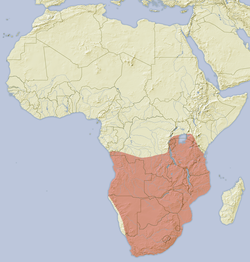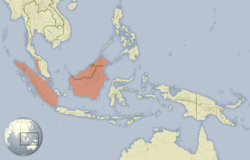
Hystricidae is a family of mammals in the order Rodentia and part of the Phiomorpha parvorder. Members of this family are called hystricids or Old World porcupines. They are found in Southern Europe, the Levant, Africa, India, and Southeast Asia, and can be found in shrublands, grasslands, forests and savannas, though some species have particular habitat and dietary requirements. They range in size from the long-tailed porcupine, at 48 cm (19 in) plus a 23 cm (9 in) tail, to the crested porcupine, at 93 cm (37 in) plus a 17 cm (7 in) tail. Hystricids are primarily herbivores and eat grasses, bulbs, tubers, fruit, bark, and roots, though insects and carrion are occasionally eaten. No hystricids have population estimates, and none are categorized as an endangered species or critically endangered.
Contents
The eleven extant species of Hystricidae are divided into three genera: Atherurus consists of two species, the African and Asiatic brush-tailed porcupine, Hystrix contains eight species of porcupines in three subgenera, and Trichys consists of a single species, the long-tailed porcupine. At least eight extinct prehistoric hystricid species have been discovered, with the most recent new description of an extinct species occurring in 2023. [1]





















